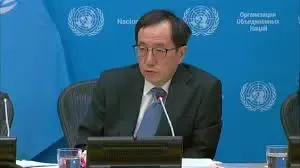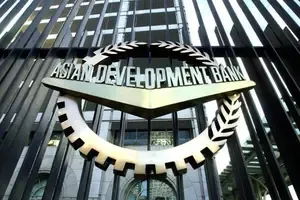Is Violence Against Women and Girls Alarmingly Widespread in the Western Pacific?

Synopsis
Key Takeaways
- Nearly one in three women globally experience intimate partner or sexual violence.
- Over a quarter of women and girls in the Western Pacific have faced violence.
- The prevalence of intimate partner violence is notably high in some Pacific island nations.
- Data gaps hinder effective policymaking and accountability.
- Stronger policies and investment in health systems are crucial for protection and empowerment.
Manila, Nov 25 (NationPress) The World Health Organization (WHO) stated on Tuesday that violence against women and girls remains a significant global issue, with recent statistics revealing that nearly one in three women has encountered intimate partner or sexual violence in their lifetime – a figure that has seen minimal change over the past 25 years.
The organization pointed out that these results underscore an undeniable truth: despite years of advocacy and policy initiatives, gender-based violence continues to be a preventable social and public health emergency and a serious infringement on human rights.
This violence has enduring physical, emotional, and economic consequences, leading to depression, injuries, poor reproductive health outcomes, and hindering women's full participation in society, according to the WHO's announcement.
In the Western Pacific Region, the WHO reported that over a quarter of women and girls have experienced intimate partner or sexual violence.
Approximately 9 percent of women aged 15 to 49 have faced intimate partner violence (IPV) in the past year, with national rates varying from 1.2 percent to 42.2 percent. Additionally, 4.3 percent experienced non-partner sexual violence within the last year, while 9.4 percent have suffered such abuse at some point in their lives.
Almost one in five women in the region has faced IPV over their lifetime – lower than the global average of one in four – but the WHO emphasized that the impact remains substantial.
In numerous Pacific island nations, the prevalence of lifetime IPV reaches one in two women, representing some of the highest rates recorded globally.
“The epidemic of violence against women and girls stands as one of the most severe violations of human rights and poses a considerable threat to health,” stated Saia Ma'u Piukala, the WHO regional director for the Western Pacific.
He added that the updated evidence makes the need for action even clearer.
“Governments and communities must leverage data to develop stronger policies, enhance prevention initiatives, and invest in health system preparedness, ensuring that every girl is safeguarded and every woman is empowered,” Piukala remarked.
A recent WHO survey on health system preparedness to deal with interpersonal violence indicates that while many countries are reinforcing policies to combat violence against women and girls, significant gaps remain in providing essential services and gathering reliable data.
The survey indicated that more countries are integrating violence response strategies into national multisectoral plans and acknowledging the critical role of health systems in addressing survivors' requirements. However, implementation continues to be inconsistent, as reported by Xinhua.
Although certain countries incorporate intimate partner violence and post-rape care into their national health plans, many still struggle to ensure that survivors consistently access these essential services.
Comprehensive post-rape care is available nationwide in only a limited number of countries, resulting in stark geographic disparities.
The survey also pointed out that data systems remain inadequate.
Just over half of the countries have conducted recent surveys on violence against women, and even fewer maintain usable homicide data, gaps that obstruct monitoring, accountability, and effective policymaking.









